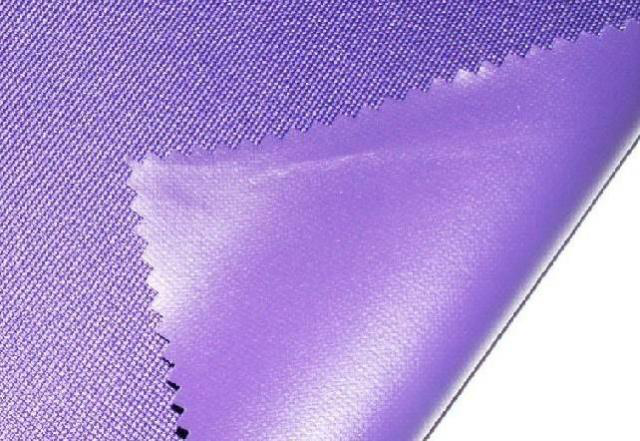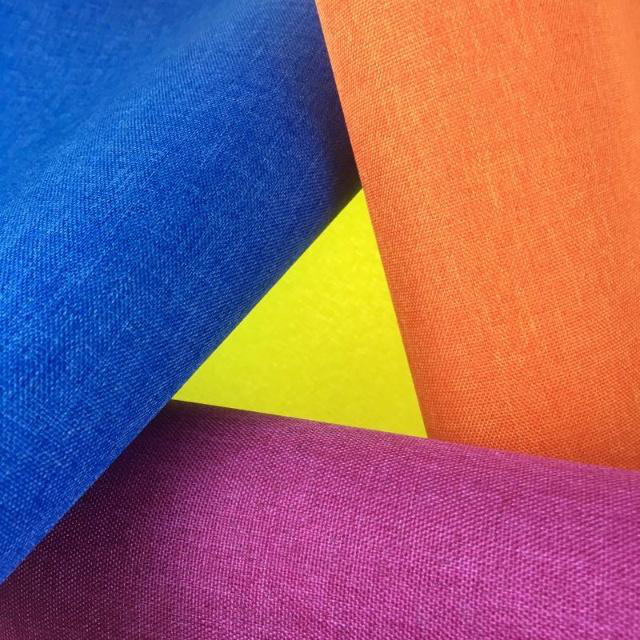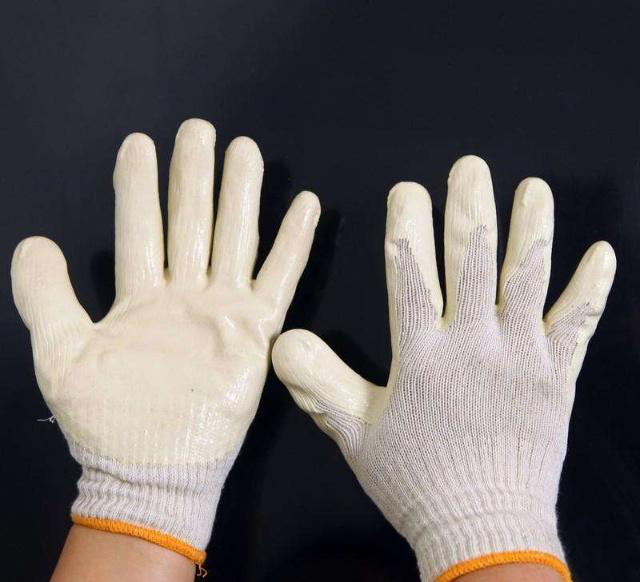Coated fabricUsage and washing methods in daily life
1
What is coated fabric?

At the end of the 20th century, Some clothes that must be dry-cleaned were seriously hardened and cracked after dry cleaning, leaving the laundry at a loss and causing heavy losses. Clothing that caused serious hardening and cracking accidents after dry cleaning with perchlorethylene was made of coated fabrics. When this lesson became familiar to most laundries, people suddenly discovered that some coated fabric garments were safe after dry cleaning with perchlorethylene. However, when relying on old experience to wash coated fabric garments, fabric damage occurred again. The coating peels off and blisters, and the coating may even become sticky. All this makes people even more confused. So, what are the coating materials of coated fabrics?
The coating of coated fabrics is a polymer material coated on the surface of textile fabrics. , after drying, it becomes integrated with the textile, so the coated fabric is also called a film fabric. Coated fabrics can improve many properties and functions of the original fabrics, such as stiffness, rain resistance, and preventing down from drilling out, etc. In recent years, the number of coated fabrics has increased day by day, and the proportion of coated fabrics used in various clothing sold on the market is also increasing. Almost most casual clothing and sportswear will choose to use coated fabrics. Moreover, whether it is economical mass clothing or expensive brand-name clothing, coated fabrics may also be used. According to some statistics, clothing using coated fabrics accounts for half of the total on the market. Therefore, coated fabrics have become a problem that the laundry industry must face seriously. When coated fabrics first came out, they once caused accidents and lessons for many laundry companies. To this day, coated fabrics continue to cause various problems to the washing and dyeing industry. So we still have to return our attention to coated fabrics.
2
What types of coated fabrics are there and how to wash them correctly?

Coated fabric How many types of coatings are there? What kind of washing characteristics do they have? In fact, there are many kinds of coated fabrics that can be seen in the domestic market, including newly developed new products and popular products, among which there are many Some fake and inferior products.
We introduce the coating types of coated fabrics and their main characteristics.
Rubber and plastic coating
This is the earliest rainproof coating and has been used For many years, rubber raincoats, plastic-coated raincoats, ponchos, etc. have been such products. Later, in order to improve the flexibility and reduce the weight of the product, rubber and plastic were combined to form a rubber-plastic coating. This type of coating has a very good rainproof effect, but is completely airtight. Currently, they are mostly used in raincoats, ponchos, tents, bags, handbags, etc., and are rarely used in making clothing. This type of coating is generally thicker, and the existence of the coating can be clearly seen, so it is easier to identify. Rubber and plastic coated fabrics cannot be washed with dry cleaning, even gasoline may partially dissolve them, and stain removers containing organic solvents cannot be used. Water washing is the only washing option.
Polyvinyl chloride coating
Polyvinyl chloride coating, referred to as PVC coating. This is a coating material that appeared relatively early. It is the kind of coating that will harden and crack after being dry-cleaned by perchlorethylene. This coating has the characteristics of being impermeable and air-impermeable, and it will not be tight or tight when worn on the body. Breathable feel. Most of the base fabrics used in this type of fabric are synthetic fibers and will hardly shrink. Therefore, clothes made of this kind of fabric can be washed with water. Once dry-cleaned with perchlorethylene, the clothes cannot be worn. PVC coating is relatively easy to identify whether it is an outer coating or an inner coating. If you fold the coating of this fabric inward, you won’t be able to twist it even with your fingers. The most representative coating product of this type is PVC Sherlock fabric (called “glued pongee” on the market). If PVG coated fabrics become hard and brittle after dry cleaning, as long as there are no signs of brittleness or blistering on the coating surface, they can be repaired by treating them with an artificial leather re-softening agent. If the coating has cracked or blistered, it cannot be repaired.
Polyethylene coating

Polyethylene coating, referred to as PE coating. This kind of coating appeared relatively early and has become relatively rare in recent years. It is also a coating that is impermeable and has poor breathability. The base fabric of this coated fabric is also a synthetic fiber fabric, which is completely washable and does not require dry cleaning. If you use dry cleaning, the coating will be removed from the surface after washing.The material peels off, causing large-area blistering and shedding. At this time, the original coating can only be completely torn off, turning the clothes into ordinary fabrics without coating, but the smoothness and crispness of the original fabrics will no longer exist, and the overall clothing will appear to have no sense of straightness. , and a little tired.
Polyurethane coating
Polyurethane coating, referred to as PU coating. Polyurethane coatings include full PU coatings and semi-PU coatings. There are also different types of polyurethane coatings using water-based polyurethane coating materials with hydrophilic functions. So far, they can withstand a certain number of tetrachlorethylene dry cleanings. coated fabric. What is more advantageous is that this type of coating can form a polymer material film with micropores on various textile substrates, so that this type of coated fabric has high performance waterproof, breathable, and moisture-permeable functions, which greatly improves the wearing comfort. Comfort of use. It can be used to make winter cold-proof clothing, student uniforms, sportswear, motorcycle clothing, field work clothing, labor protection clothing, as well as clothing for public security, firefighting, field army, armed police and other industries. It has corresponding wear under various environmental conditions. Comfort. This kind of polyurethane-coated fabric can be dry-cleaned with perchlorethylene, but the number of dry cleanings is limited. Generally, there should be no problem if it is dry-cleaned four or five times. If it has been dry-cleaned and washed many times, it will still gradually become hard. At present, many of the well-known brands of clothing we see at home and abroad may use this kind of coated fabric.
Polyacrylate coating
Polyacrylate coating, referred to as PA coating. This is also a relatively common coated fabric at present, which can be divided into solvent-based polyacrylate coating and water-based polyacrylate coating. Water-based polyacrylate coating is also called AC glue coating. Solvent-based polyacrylate coating has good water resistance and water pressure resistance, while water-based polyacrylate coating is not suitable for strong water washing. That is to say, it may not be affected during the washing process at lower temperatures and shorter times. When the washing temperature is higher or it is subjected to strong washing mechanical force, the coating will gradually melt and even break and fall off.
Polyvinyl alcohol coating Polyvinyl alcohol coating, referred to as PVAL coating. Polyvinyl alcohol is a material with good water solubility. It can be used with certain resin-based materials to obtain a good water-resistant coating. Polyvinyl alcohol is also called sizing resin in the spinning industry. It can be used for sizing yarn fabrics to improve a smooth and stiff feel. It can also be used as a fabric adhesive. Some fabric coatings are treated with polyvinyl alcohol. When washed with water, the coating will dissolve and become sticky, and the glued surface will migrate, resulting in large-area blistering and wrinkles. The coating of this kind of fabric can hardly be washed with water, so it should be considered a fake product in a sense.
In addition, some companies may also make certain changes and explorations in the processing technology and added ingredients of coating materials, resulting in changes in the performance of coated fabrics. However, generally speaking, the focus of the impact on the washing and dyeing industry is the choice of washing methods, that is, their adaptability to dry cleaning and water washing. These different coated fabrics often cannot accurately identify their washing performance from the surface. Therefore, in addition to the fact that most coated fabrics can be washed, it is still necessary to take the trouble to test unknown coated fabrics to ensure the correct choice of washing method, and cannot be taken lightly.






